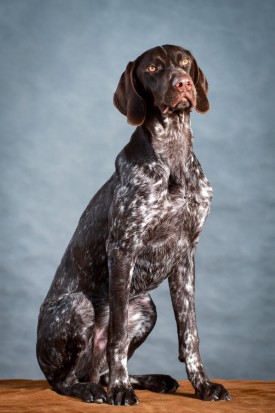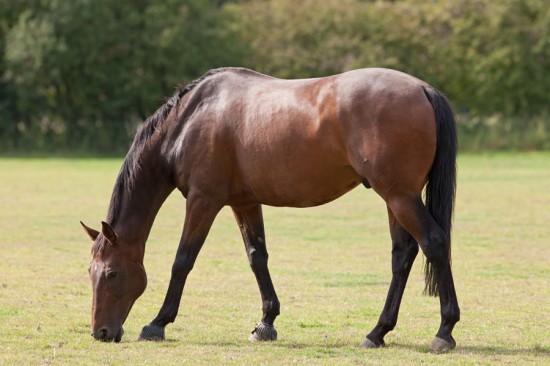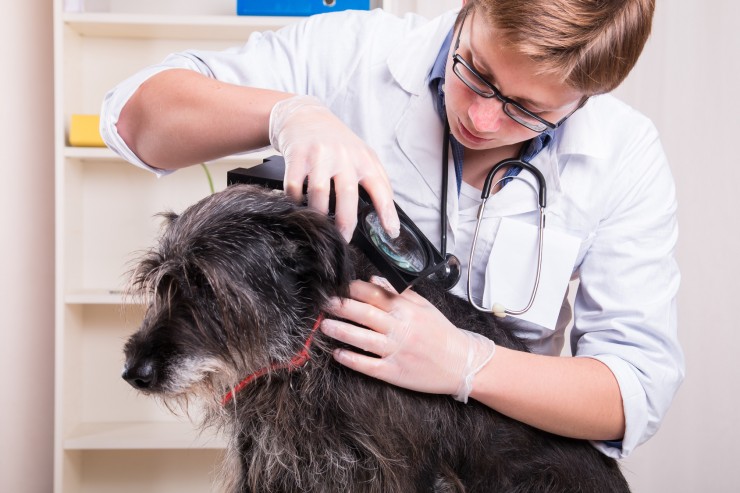



The German shorthaired pointer is a German breed of dog that is classed as medium to large in size. Bred in the 19th century for hunting, the dog is of course a point-hunter, meaning that they pinpoint potential game and “point” to alert the hunter to its presence.
Classed as a member of the sporting dog group, the German shorthaired pointer is a very adaptable dog that can also make for an excellent pet, although they require a high degree of exercise and stimulation, which can make them challenging to own.
They are leggy, lithe and muscular dogs, who should not be heavy, but rather have a build in proportion to their height. Their coats are short with a thick undercoat, covered with guard hairs and making the coat both warm and water resistant. They can be seen in colours ranging from liver to black, or either black and white or liver and white. The breed also notably has webbed feet, and they are equally at home in the water or on land!
If you are considering buying or adopting a German shorthaired pointer, it is important to find out as much as you can about the breed first. One important element of this is investigating the general health of the breed, and their average longevity. We will cover these factors in more detail within this article.
The average longevity of the German shorthaired pointer is 12-14 years, which places them towards the middle to top of the average for other breeds of a similar size and build. This indicates that the breed as a whole is healthy and robust, and fit for life.
The coefficient of inbreeding statistic for the German shorthaired pointer is 5.3%, which places them within the acceptable range of 6.25% or lower that is considered to be the ideal for pedigree dog breeds. This indicates that the German shorthaired pointer is genetically diverse, and not subjected to a significant degree of inbreeding.
While the conformation of the breed as a whole is considered to be well balanced and healthy, the deep chest of the breed does place them at risk of bloat, or GDV. This is an acute condition that causes the stomach to fill with gas, and potentially twist over on itself, and requires prompt surgical intervention.
A range of testing programmes and health schemes are in place for the German shorthaired pointer breed, in order to collate a full picture of the breed’s health and work to eradicate hereditary health problems. Recommended tests and schemes for dogs of the breed are:
As well as the conditions mentioned above, a range of other conditions have been identified within the German shorthaired pointer too, and the list is quite exhaustive! While this might seem rather off-putting at first, it is of course important to remember that some of these conditions can be successfully corrected or managed, and that no dog is likely to suffer from a significant number of them!
 Checking Your Ferret Over And Identifying Good Health
Checking Your Fer
Checking Your Ferret Over And Identifying Good Health
Checking Your Fer
 Common Diseases And Ailments Of Horses And Ponies
Common Diseases A
Common Diseases And Ailments Of Horses And Ponies
Common Diseases A
 Exercising Older Dogs Safely In Cold Weather
Exercising Older
Exercising Older Dogs Safely In Cold Weather
Exercising Older
 Six Flea And Tick Myths Debunked
Six Flea And Tick
Six Flea And Tick Myths Debunked
Six Flea And Tick
 Feeding Your Horse - It Doesnt Have To Be Difficult!
Feeding Your Hors
Feeding Your Horse - It Doesnt Have To Be Difficult!
Feeding Your Hors
Copyright © 2005-2016 Pet Information All Rights Reserved
Contact us: www162date@outlook.com